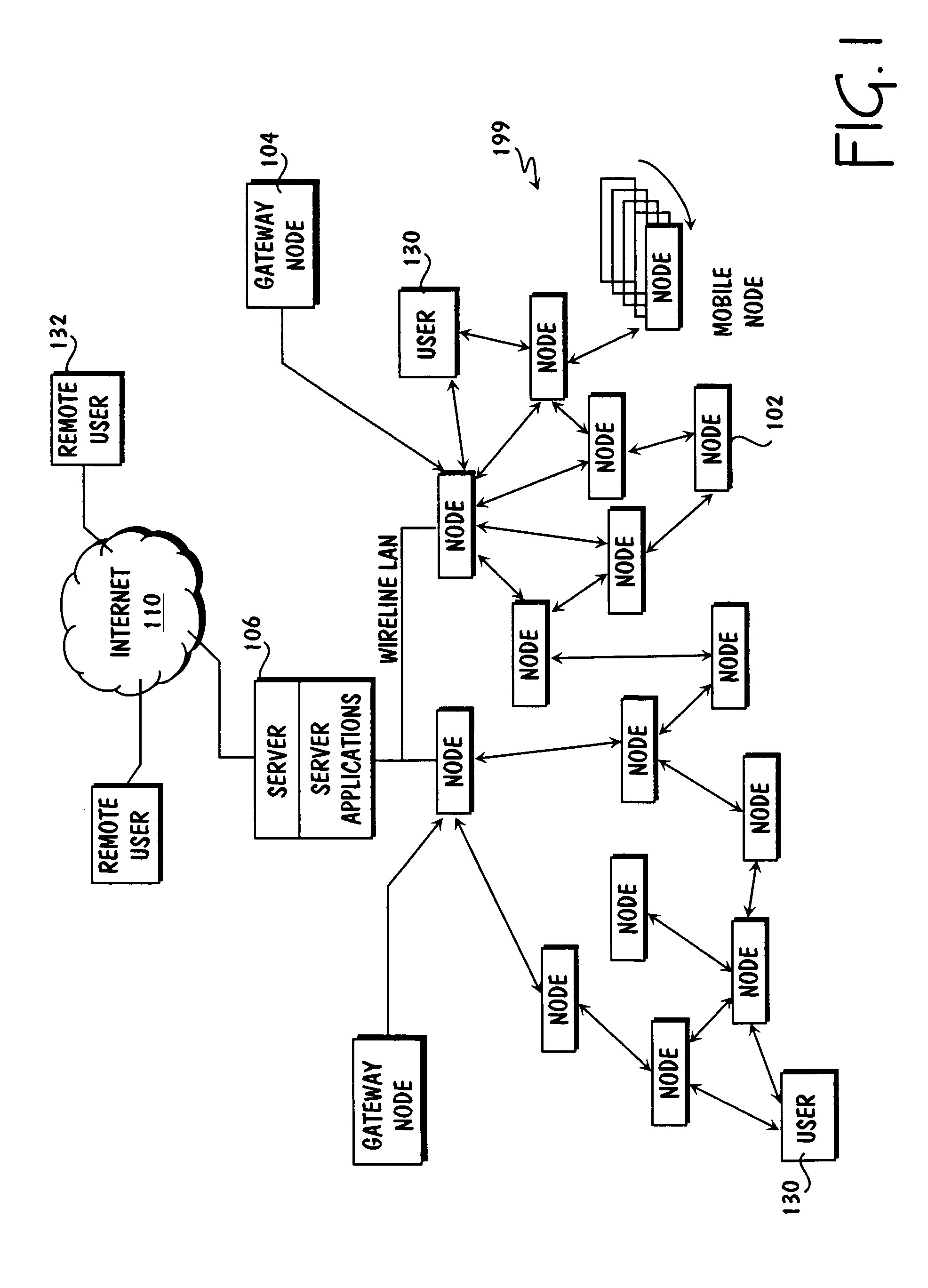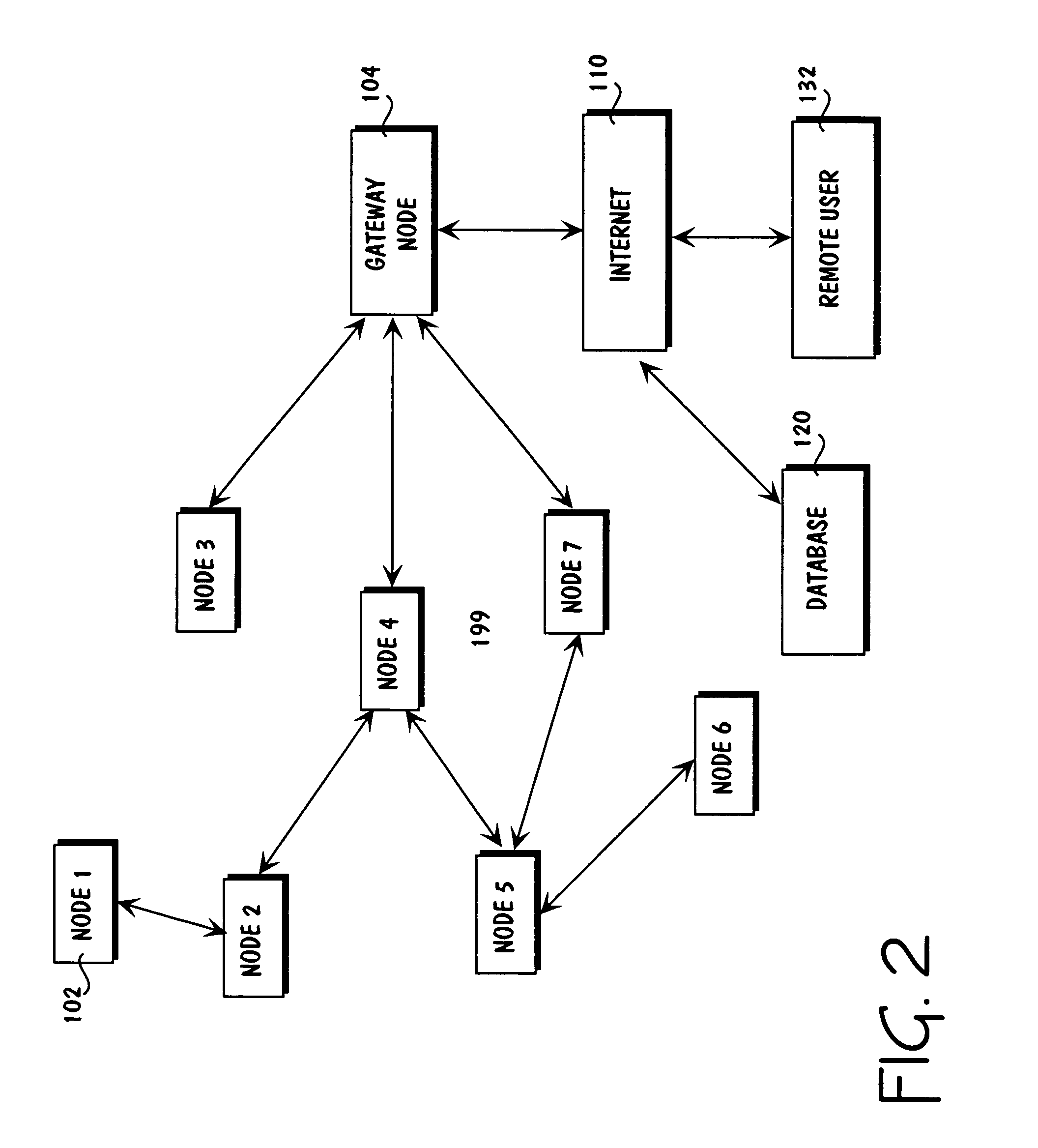Apparatus for vehicle internetworks
a vehicle internet and vehicle technology, applied in the field of intelligent networks, can solve the problems of imperil vehicle operation or safety, consumer electronics cannot interfere in any way with the safe operation of the vehicle, and it is expensive to add consumer electronics to the vehicle, so as to simplify the upgrade over the lifetime of the vehicle, and secure and convenient addition of devices
- Summary
- Abstract
- Description
- Claims
- Application Information
AI Technical Summary
Benefits of technology
Problems solved by technology
Method used
Image
Examples
Embodiment Construction
[0045]The Wireless Integrated Network Sensor Next Generation (WINS NG) sensors and nodes provide distributed network and Internet access to sensors, controls, and processors that are deeply embedded in equipment, facilities, and the environment. The WINS NG network is a new monitoring and control capability for applications in such sectors as transportation, manufacturing, health care, environmental monitoring, and safety and security. Wireless Integrated Network Sensors combine microsensor technology, low power signal processing, low power computation, and low power, low cost wireless (and / or wired) networking capability in a compact system. The WINS NG networks provide sensing, local control, and embedded intelligent systems in structures, materials, and environments.
[0046]The WINS NG networks provide a more efficient means of connecting the physical and computer worlds. Sensor nodes self-organize to form a network, and seamlessly link to the Internet or other external network via...
PUM
 Login to View More
Login to View More Abstract
Description
Claims
Application Information
 Login to View More
Login to View More - R&D
- Intellectual Property
- Life Sciences
- Materials
- Tech Scout
- Unparalleled Data Quality
- Higher Quality Content
- 60% Fewer Hallucinations
Browse by: Latest US Patents, China's latest patents, Technical Efficacy Thesaurus, Application Domain, Technology Topic, Popular Technical Reports.
© 2025 PatSnap. All rights reserved.Legal|Privacy policy|Modern Slavery Act Transparency Statement|Sitemap|About US| Contact US: help@patsnap.com



